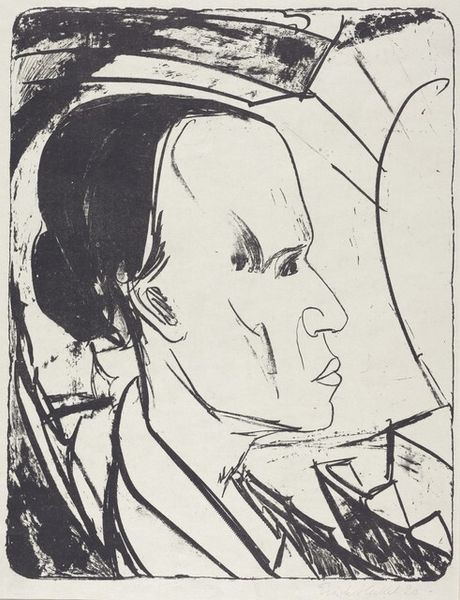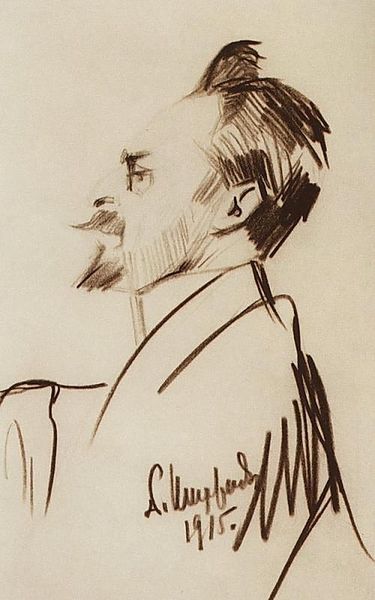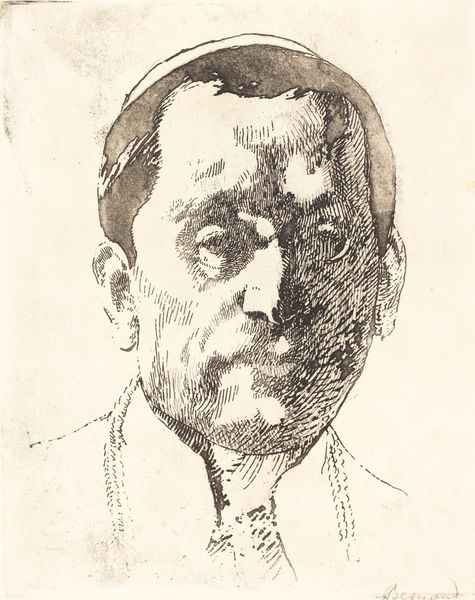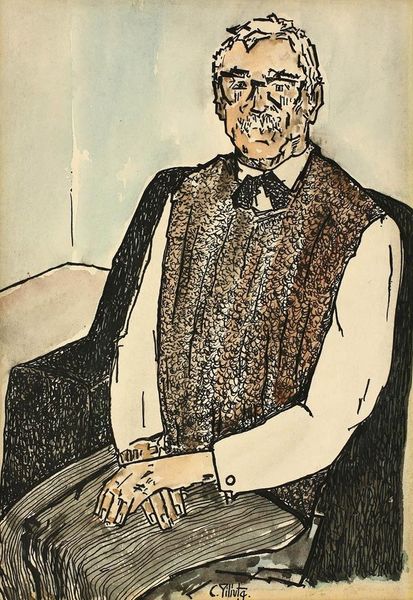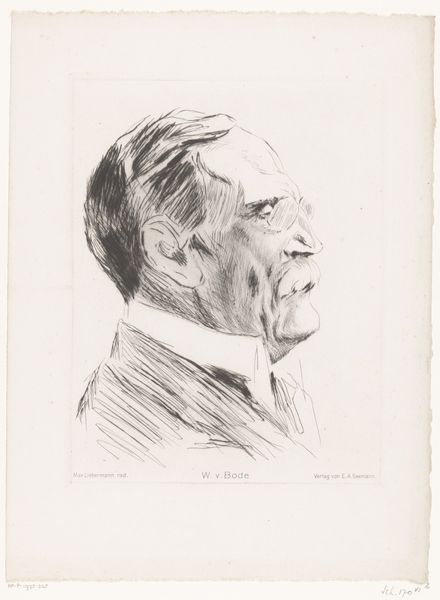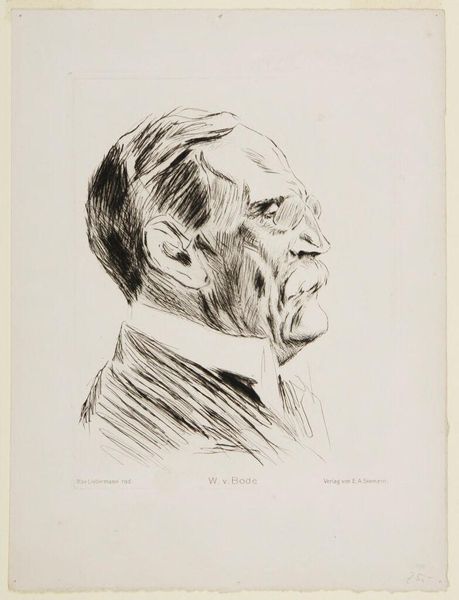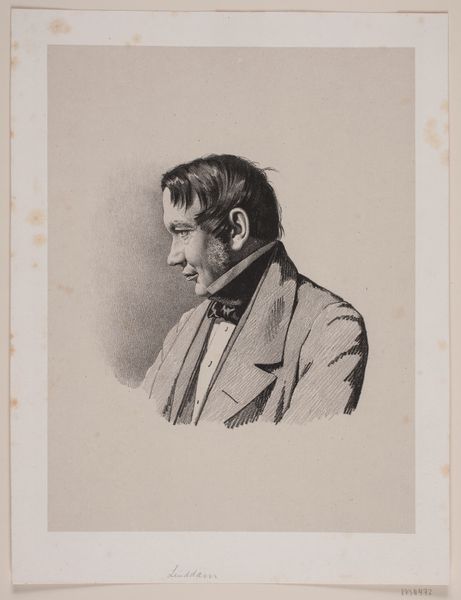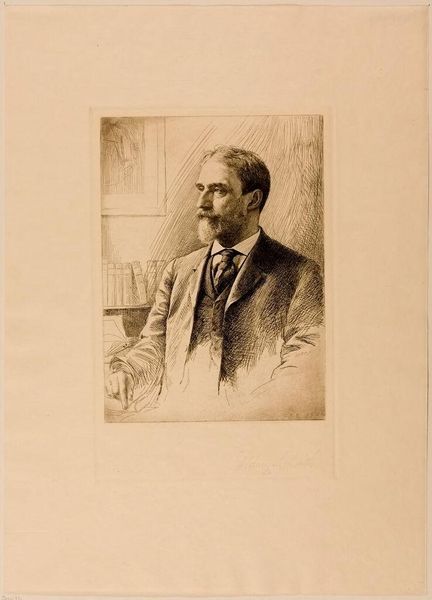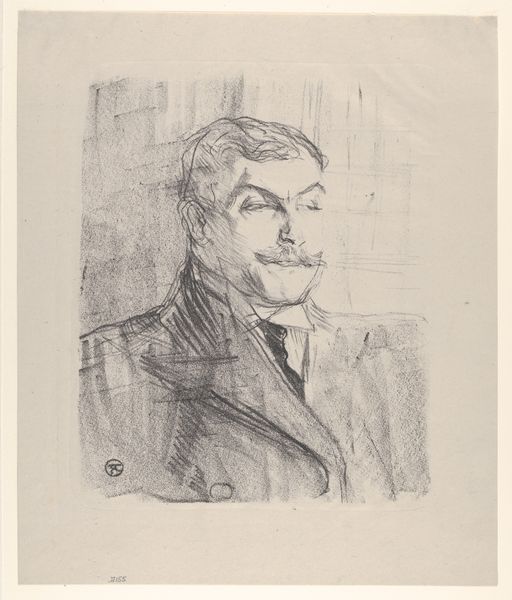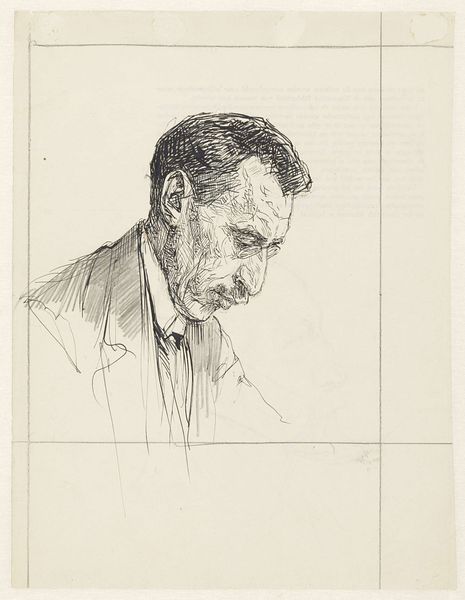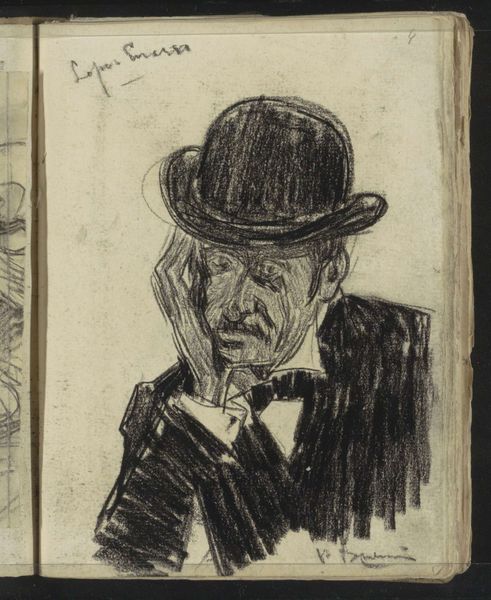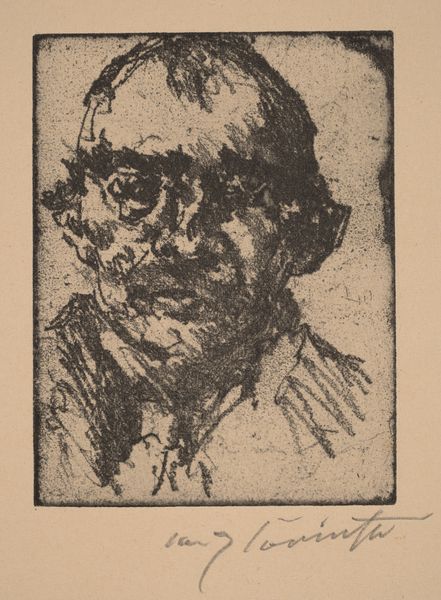
graphic-art, print, woodcut
#
portrait
#
graphic-art
# print
#
caricature
#
expressionism
#
woodcut
#
monochrome
Copyright: Public domain
Curator: Boris Kustodiev created this arresting likeness, “Portrait B.A. Gorin-Goryainov," in 1926. It’s a woodcut print, relying on the stark contrast of black and white. Editor: My first impression is one of tension. The man's profile, sharply defined against the abstracted, almost Cubist background... it creates a feeling of unease. The monochrome palette heightens that sense of starkness, a certain severity. Curator: Absolutely. It feels almost like a theatrical mask. Consider the subject: Gorin-Goryainov was a prominent actor and director. The surrounding fragmented text seems to allude to theatrical posters. It presents him not just as a man, but as a symbolic figure. What might those fragments of posters evoke? Is it memory? Or the layering of roles a performer inhabits? Editor: That layering is crucial. As a woodcut, the artist would have painstakingly carved away the negative space to leave the portrait raised. Think of the physical labor involved in achieving this precision. Then, multiples are produced. It underscores the democratizing potential of printmaking while retaining its character as a work of art. Curator: I agree. Woodcuts possess this potent capacity to disseminate meaning. And look at how Kustodiev exaggerates features here: the pronounced nose, the receding hairline. It’s caricature, but affectionate, reflecting perhaps a deeper understanding of his subject. Think about the tradition of theatrical caricature, using exaggeration to reveal character. Editor: That connects back to my initial impression of unease. While caricature can be playful, this rendition teeters on the edge. The heavy blacks, the hard edges… they evoke the anxieties bubbling beneath the surface in 1920s Russia. What kind of timber did he use, and from what part of Russia, and at which time of the year? These choices, no matter how subconcious, surely contributed to the effect of this portrait. Curator: Yes, the historical context is palpable. This wasn't just about depicting an actor. It captures the zeitgeist, the era's psychological complexity. Editor: Ultimately, the raw materiality amplifies the underlying psychological narrative, don’t you think? Curator: It’s that interplay of symbolism, social context and technical artistry which makes this print so compelling to me. Editor: Yes, that dialogue between process, material and subject.
Comments
No comments
Be the first to comment and join the conversation on the ultimate creative platform.
